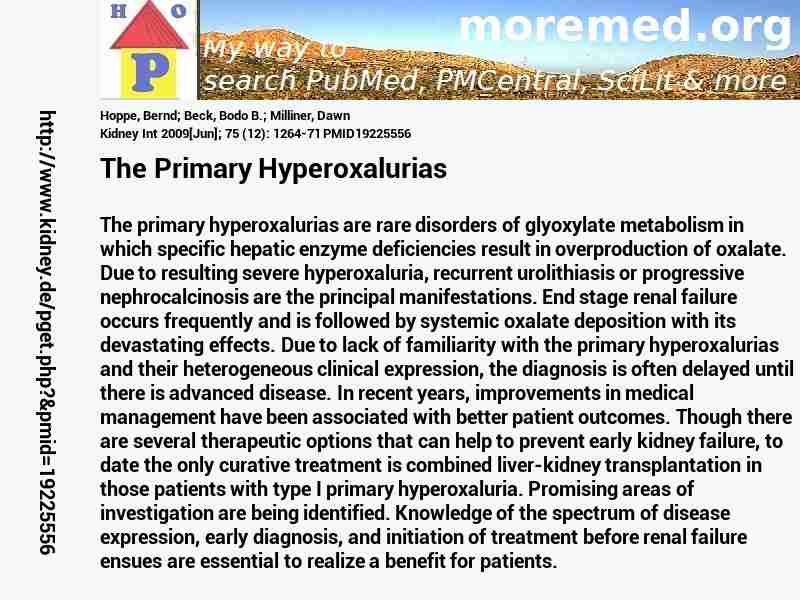
|
10.1038/ki.2009.32
http://scihub22266oqcxt.onion/10.1038/ki.2009.32

C4577278!4577278!19225556
 free free
 free free
 free free
Warning: file_get_contents(https://eutils.ncbi.nlm.nih.gov/entrez/eutils/elink.fcgi?dbfrom=pubmed&id=19225556&cmd=llinks): Failed to open stream: HTTP request failed! HTTP/1.1 429 Too Many Requests
in C:\Inetpub\vhosts\kidney.de\httpdocs\pget.php on line 215
|  
Warning: imagejpeg(C:\Inetpub\vhosts\kidney.de\httpdocs\phplern\19225556.jpg): Failed to open stream: No such file or directory in C:\Inetpub\vhosts\kidney.de\httpdocs\pget.php on line 117
 Kidney+Int 2009 ; 75 (12): 1264-71 Kidney+Int 2009 ; 75 (12): 1264-71
Nephropedia Template TP
gab.com Text
Twit Text FOAVip
Twit Text #
English Wikipedia
|
The Primary Hyperoxalurias #MMPMID19225556Hoppe B; Beck BB; Milliner DKidney Int 2009[Jun]; 75 (12): 1264-71 PMID19225556show ga
The primary hyperoxalurias are rare disorders of glyoxylate metabolism in which specific hepatic enzyme deficiencies result in overproduction of oxalate. Due to resulting severe hyperoxaluria, recurrent urolithiasis or progressive nephrocalcinosis are the principal manifestations. End stage renal failure occurs frequently and is followed by systemic oxalate deposition with its devastating effects. Due to lack of familiarity with the primary hyperoxalurias and their heterogeneous clinical expression, the diagnosis is often delayed until there is advanced disease. In recent years, improvements in medical management have been associated with better patient outcomes. Though there are several therapeutic options that can help to prevent early kidney failure, to date the only curative treatment is combined liver-kidney transplantation in those patients with type I primary hyperoxaluria. Promising areas of investigation are being identified. Knowledge of the spectrum of disease expression, early diagnosis, and initiation of treatment before renal failure ensues are essential to realize a benefit for patients.�
  
DeepDyve
Pubget Overpricing | 
|